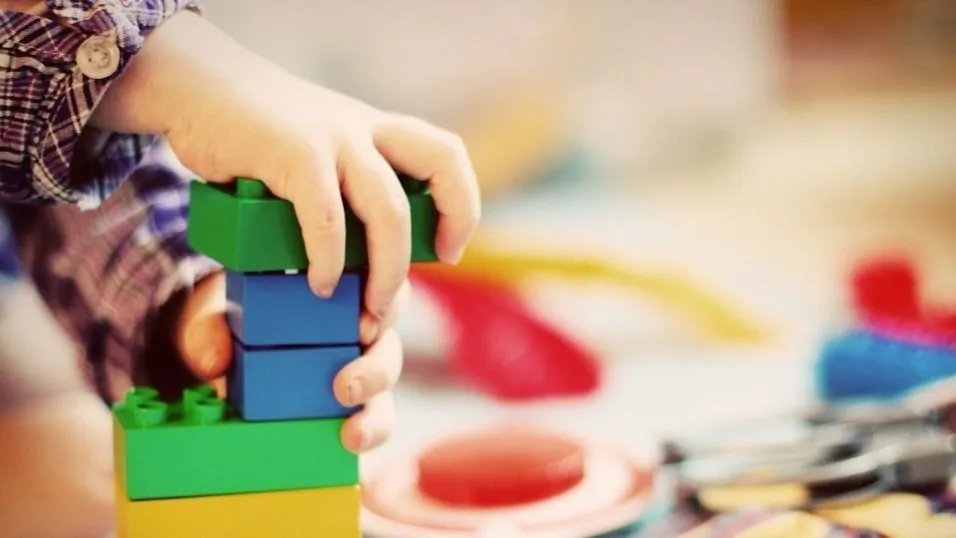How does handedness relate to infant language development?
Developing motor skills appears to be related to language abilities. The research team of Sandy Gonzalez investigated whether consistency in handedness predicts receptive and expressive language.
Posted by
Published on
Tue 06 Apr. 2021
Topics
| Child Development | Developmental Psychology | The Observer XT | Coding Behavior | Infants |

When you talk about handedness, the first question that comes to mind is ‘What hand do you write with?'. In addition, movements such as combing your hair or throwing a ball are tasks that uncover your hand preference. We usually perform these activities with one hand.
There are also a lot of tasks we fulfill using both hands. For example, cutting a piece of paper, unzipping a bag, peeling a sticker from its backing, or unscrewing a lid from a jar. These skills are called Role Differentiated Bimanual Manipulation (RDBM).
Fine motor skill development is key
Role-differentiated hand use can be defined as a bimanual manipulation skill in which each hand performs a different action, but these actions unite in the manipulation of an object. The different actions of the two hands have complementary functions; one hand has a supporting, or stabilizing role as the other manipulates or explores the object. Thus, the one hand holds the paper steady, while the other hand cuts it in half with a scissor. A sophisticated fine motor ability.
Developing these motor skills is key to children’s learning and exploration. It also appears to be related to spatial, social, and language skills. According to research, consistency in hand preference early in development is linked to language skills. For example, Nelson and colleagues performed several studies to confirm this.
FREE WHITE PAPER: Tools for infant studies
Learn more about the software tools available for infant studies.
- Capture behaviors with video
- Annotate behaviors accurately
- Unobtrusive emotion analysis
Developmental research on handedness and language
Researcher Sandy Gonzalez from the Florida International University and New York University conducted a study together with her team to investigate whether consistency in handedness predicts receptive and expressive language abilities. What are receptive and expressive language abilities?
- Receptive language ability: the child understands and comprehends spoken language that he or she hears or reads.
- Expressive language ability: the child makes requests, choices, asks questions, answers, and describes events. Speaking, gesturing (waving, pointing), writing (texting, emailing), facial expressions (crying, smiling), and vocalizations (crying, yelling) are all variations of expressive language.
Score infant behavior for analysis
A group of 90 children was included in the study. The researchers assessed hand preference for RDBM at monthly intervals from 18 to 24 months. Twenty-nine objects that afford actions where one hand stabilizes the object (non-preferred hand) while the other hand manipulates the object (preferred hand), were presented individually at the child’s midline while they sat on their parent’s lap.
Children were video recorded during the RDBM assessment. Video data were scored afterwards by trained observers using The Observer XT. Three latent classes for toddler hand preference were identified using the Latent Class Growth Analysis (LCGA): right-mild left (largely right hand use with little left hand use), right-moderate left (mostly right hand use with some left hand use), and left-moderate right (mostly left hand use with some right hand use).
Receptive and expressive language skills were measured at 5 years of age, using the Preschool Language Scales 5th edition (PLS-5). The scales assessed various areas of language development including vocal development, social communication, semantics, language structure, and emerging literacy skills.
FREE TRIAL: Try The Observer XT yourself!
Request a free trial and see for yourself how easy behavioral research can be!
- Work faster
- Reduce costs
- Get better data
Consistency in hand preference important for language outcomes
The majority of the sample fitted a right-mild left classification of hand use for RDBM. This hand preference as well as the other two classes demonstrated distinct hand preferences at 18 months, and did not change over time from 18 to 24 months, indicating that hand preference for RDBM was stable throughout toddlerhood.
Furthermore, the researchers found that toddlers with consistent right hand use for RDBM had greater receptive language skills at the age of 5, compared to toddlers with a right hand preference but moderate left hand use, and compared to toddlers with a left hand preference but moderate right hand use.
They also demonstrated greater expressive language skills at 5 years compared to toddlers with a left hand preference but with moderate right hand use. These results indicate that early consistency in hand preference for fine motor skills during toddlerhood serves an important role in language outcomes in early childhood.
Tools to study children's development
In the Noldus Webinar about Research tools in Developmental Psychology, we explained how our research tools can be used to study the behavior of children both in a natural and in a laboratory setting. Curious? Watch the webinar on demand now!
References
Gonzalez, S.L.; Campbell, J.M.; Marcinowski, E.C.; Michel, G.F.; Coxe, S. & Nelson, E.L. (2020). Preschool language ability is predicted by toddler hand preference trajectories. Developmental Psychology, 56(4), 699–709. https://doi.org/10.1037/dev0000900
Kimmerle, M.; Mick, L.A. & Michel, G.F. (1995). Bimanual role differentiated toy play during infancy. Infant Behavior & Development, 18, 299-307. https://doi.org/10.1016/0163-6383(95)90018-7
Related Posts

7 tips to make coding behavioral data more fun

How to develop your training and education facility
